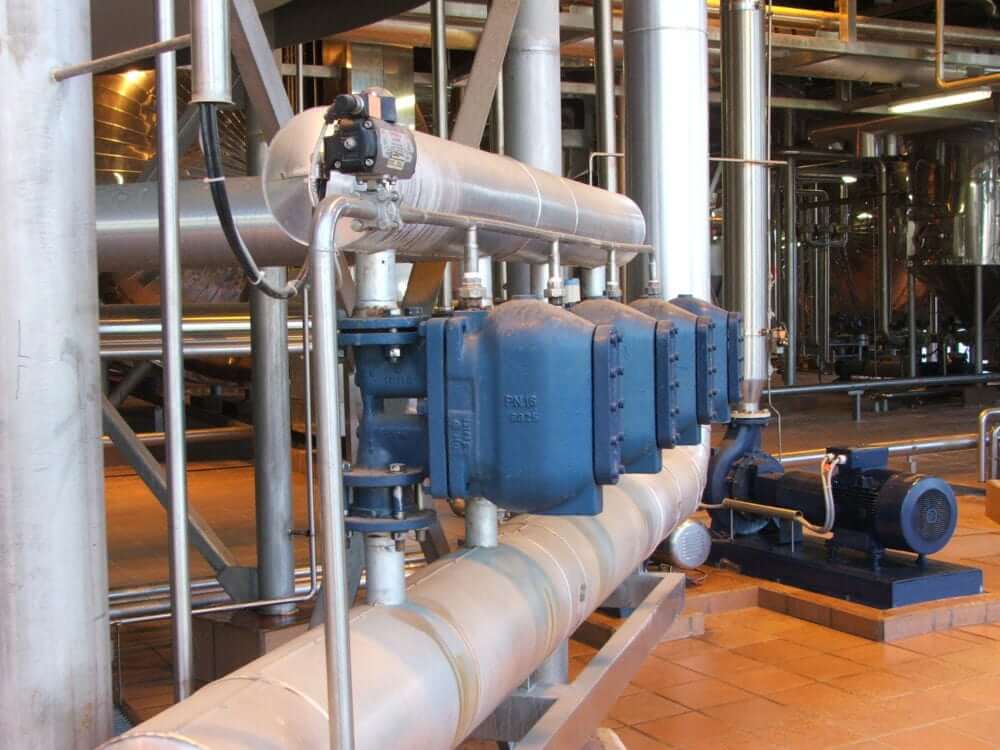Steam and Condensate System Waterhammer | Part 3/3: Solutions to Waterhammer

Waterhammer in Steam and Condensate Systems, Segment Three, The Solutions or the Final Segment.
Waterhammer forces are extremely dangerous. It’s a major safety issue in steam and condensate systems. The right-hand picture is what happens when a steam line release. Safety is the number one item in any steam and condensate system followed by reliability.
Waterhammer always needs to be corrected immediately. Do not allow it to continue. There’s several times we find you’ve got Waterhammer in the system and people will say, “Oh, it’s been like that for a couple months.” I tell people, “I call that lucky because one day you are going to unlucky.” Things like what you see in that picture can occur.
Prevention Proper Training for Plant Personnel
Key factor of team and condensate, always train your plan personnel on all aspects of the steam system. Ensure correct steam and condensate designs. The thing is we talked about piping, configurations, steam trap station placement, condensate line sizing. All that’s to ensure that the system is designed correctly. If you design correctly, there are no issues.
The other thing is that if eliminate Waterhammer, we get a very reliable system. Have documented SOPs, standard operating procedures, for steam, startup, shutdown, condensate line start up, shut down. Don’t have people go out there and start up from memory. Make sure that they have a documented SOP and then we can ensure that we’re going to have a safe startup and a safe shut down without Waterhammer.
Have installation standards for steam components. How to place in isolation valves with warmup valves and a drip pocket ahead of them. Have a standard showing how to pipe in to condensate headers. Have a standard diagram where do we need to place steam trap stations for condensate removal on steam lines, so we do not have Waterhammer.
So, it’s very important to have installation standards. If you don’t have them and need help, contact us. We have many diagrams at no cost to provide to you.
Properly specify a place operating steam line drip, steam trap stations on the steam system. Again, making sure that the steam traps are sized correctly. Understanding P1 and P2. That the connection, the branch lines, go to the top of the condensate header which we talked about that eliminate the thermal shock Waterhammer from the system. The thing is that it will take time to size steam traps as much as you take the time and effort to size a control valve, size the steam trap appropriately.
Use warmup valves and steam isolation valves larger than two inches. Do not crack open a large steam isolation valve with the hope of voiding condensation of induced Waterhammer. This will not guarantee a safe operation. One of the most unsafe operations is people using external forces on large valves as shown in the picture in right hand side, to open the valve.
The thing is that the valve manufacturer did not design the bonnet of valve for that external force. When you apply external force, you have a chance of breaking the bonnet and having a major failure. So, don’t do this. Always install warmup valves, it’s been a standard since 1920.
Check and repair pipe insulation. Not only it saves energy, but it reduces an accumulation of condensate in the piping systems. One of the things is the fastest payback, insulate, insulate, insulate. Everything today gets insulated. Condensate line sizing is crucial, we talked about that.
Do not exceed 4,000 feet per minute. Undersized condensate lines are one of the largest contributors to Waterhammer so make sure you take your time and effort to size a condensate line. A rule of thumb, steam line is three-inch, condensate line should be three inches or larger.
System that has a modulating control valve should have a drip leg upstream of valve to remove condensate during a closed condition of the valve. Rule of thumb, any valve that shuts off needs the to have a steam trap station ahead of it to remove the condensate that will accumulate.
Condensate can be delivered in a pressurized condensate return line only if proper differential is maintained across a drain device which can be a steam trap or control valve. Again, understanding P1 and P2.
Also, properly label stem and condensate lines. Take that extra time to label the lines so we know what’s in the line and the flow direction.
If the steam and condensate lines is now abandoned, it’s never going to be used again, remove it from the system. Don’t leave it energize and always have a proactive maintenance program.
The World of Steam is great. We’ve been very fortunate to travel the world and help clients throughout the world. We want you to have a safe and reliable operation.
The company, we’re based in Tampa, Florida. We do steam system assessment, balance, and performance analysis. A key thing, another key factor is training. Long-term impact that we have with our clients is upgrade process changes, lower costs of steam and we are your partners.
If you have any questions or we can be of service, our email addresses are here, below. Contact myself, or Graham and we’d be more than happy to help you.
Thank you for your time to listen to us, hopefully this has been of a help to you. Have a great day.










